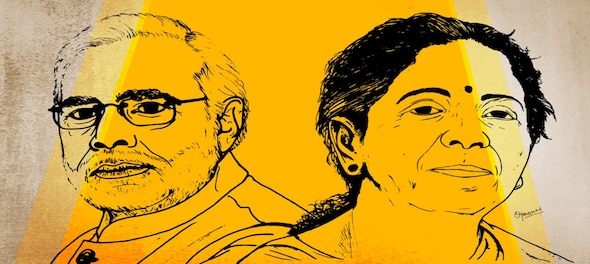
The Union Budget for 2020 is knocking at our door. And, economic problem wise, 2020 happens to be a somewhat special year, calling for serious attention. The Government of India, independent researchers, as well as institutional economy watchers across the world have noted that the Indian economy is not passing through an idyllic phase.
The most dreaded issue concerns the growth rate of GDP which hit a year on year quarterly rate of 4.5 percent in December, the lowest in the downward spiraling series since 2016. Economic slowdown leads invariably to rising unemployment, which, according to The Economist magazine, had risen from 3.6 percent in December 2018 to 7.6 percent in 2019. Add to this inflation.
Signs of stagflation
The Economist reports once again that hawkers who "sell fruit, vegetables and other kitchen staples" have begun to quote prices, "not per kilogram, but per quarter-kilo – a forlorn attempt to mask price increases." Also, "(d)espite a collapse in sales, vehicle prices are rising. It is unlikely therefore that the Reserve Bank of India will reduce the repo rate next month. If it does, the economy will possibly develop signs of stagflation, i.e. a marriage of stagnation and inflation.
Stagnation alone is Augean stable enough for the Finance Ministry to worry about. It is now clear enough that economic slowdowns cannot be cured by interest rate reductions.
That this is likely to be the case was noted years ago by Keynes in his General Theory of Employment, Interest and Money, where he was "somewhat sceptical of the success of a merely monetary policy" and expected to "see the State … taking an ever-greater responsibility for directly organising investment …"
Its interest rate policy having failed, the government announced a host of tax reductions for the corporate sector in the hope that investment, and hence demand, would be stimulated. Even if this policy yields results, there are no telltale signals yet that investment spirits have revived. The upcoming budget must find ways therefore of improving expenditure by the government as well as the lay public (as opposed to the business sector). The lay public, in turn, divides up into two parts, the taxables and the non-taxables. They may also be viewed without much loss of generality as the formal sector and the informal sector. The formal sector is a relatively small fraction of the labour force (less than 10 percent according to some estimates). The informal sector is large by comparison. Assume then that the formal sector spends more, induced by tax reductions. This may well energise the industrial sector and positively impact the growth rate.
A higher growth rate though can at best be viewed as the proximate goal of policy. The ultimate objective must be a rise in employment. What though is the relationship between a higher growth rate and employment creation? The answer to this question brings up issues related to technology. With unfettered progress in artificial intelligence, the process of production has undergone considerable transformation.
Technological advance has brought about a metamorphosis in the nature of labour itself. Growth cannot be divorced from labour, needless to say. However, the quality of labour associated with industrial growth has undergone sea change over time.
More likely than not, a rise in industrial growth will absorb highly skilled workers and this, by its very nature, will ensure that the employment potential of demand generated by the formal sector is not too high. Fewer skilled workers are needed to produce any given volume of output compared to unskilled workers. Growth accompanied by a marginal rise in employment will only help increase economic inequality.
This brings us back to the question of government expenditure, not on salaries earned by government servants, but on the creation of public goods and services. These could include roadways, a relatively less skilled labour-intensive production programme.
Budgetary dilemmas
The Swacch Bharat programme and construction of toilets commends itself, but such programmes cannot succeed without adequate water supply. Once again, labour-intensive water supply activities can increase employment and incomes. Elementary health care, education and so on, which produce services for the non-urban sector can guarantee employment generation as well.
In fact, the MNREGA scheme can be properly expanded (instead of being allotted a lower budget as was the case last year), to generate income for the less affluent and help them spend more. Direct expenditure by the government to improve employment prospects for the "poor" ought to be the best policy at the moment for improving the economy's growth and employment performance.
Of course, this will lead to budgetary problems. Deficits could increase, which will lead the government to borrow either from the Reserve Bank (money printing) or from the public. Both have implications for future taxes, which may need to be raised to repay loans. Fiscal deficit targets, therefore, may have to be given lower priority for a while. In fact, it is not too clear if the targeted fiscal deficit of 3.3 percent for FY 2019-20 is about to be realised.
Lower tax rates, if that is what the government is planning to introduce, are likely to raise, not lower budget deficits. A monumental trade-off question, therefore, stares the Finance Ministry in its face right now — the one between tight fiscal discipline and unemployed masses.
Dipankar Dasgupta is former Professor of Economics, Indian Statistical Institute, Delhi and Kolkata.
Check out our in-depth Market Coverage, Business News & get real-time Stock Market Updates on CNBC-TV18. Also, Watch our channels CNBC-TV18, CNBC Awaaz and CNBC Bajar Live on-the-go!


Repolling underway at one polling booth in Chamarajanagar LS segment in Karnataka
Apr 29, 2024 10:32 AM
2024 Lok Sabha Elections | What does a low voter turnout indicate for NDA and I.N.D.I.A Bloc
Apr 29, 2024 5:48 AM
'Borrowed' leaders: Congress hits out at AAP for not fielding their own candidates in Punjab
Apr 28, 2024 9:53 PM
EC asks AAP to modify election campaign song and Kejriwal's party is miffed
Apr 28, 2024 9:25 PM

